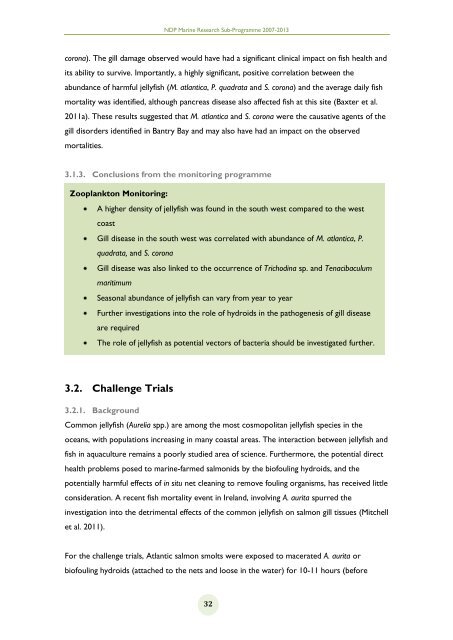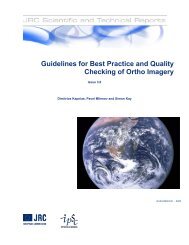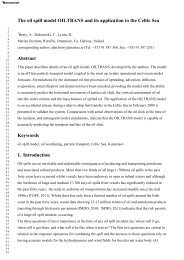No. 12. GILPAT.pdf - Marine Institute Open Access Repository
No. 12. GILPAT.pdf - Marine Institute Open Access Repository
No. 12. GILPAT.pdf - Marine Institute Open Access Repository
Create successful ePaper yourself
Turn your PDF publications into a flip-book with our unique Google optimized e-Paper software.
NDP <strong>Marine</strong> Research Sub-Programme 2007-2013corona). The gill damage observed would have had a significant clinical impact on fish health andits ability to survive. Importantly, a highly significant, positive correlation between theabundance of harmful jellyfish (M. atlantica, P. quadrata and S. corona) and the average daily fishmortality was identified, although pancreas disease also affected fish at this site (Baxter et al.2011a). These results suggested that M. atlantica and S. corona were the causative agents of thegill disorders identified in Bantry Bay and may also have had an impact on the observedmortalities.3.1.3. Conclusions from the monitoring programmeZooplankton Monitoring:A higher density of jellyfish was found in the south west compared to the westcoastGill disease in the south west was correlated with abundance of M. atlantica, P.quadrata, and S. coronaGill disease was also linked to the occurrence of Trichodina sp. and TenacibaculummaritimumSeasonal abundance of jellyfish can vary from year to yearFurther investigations into the role of hydroids in the pathogenesis of gill diseaseare requiredThe role of jellyfish as potential vectors of bacteria should be investigated further.3.2. Challenge Trials3.2.1. BackgroundCommon jellyfish (Aurelia spp.) are among the most cosmopolitan jellyfish species in theoceans, with populations increasing in many coastal areas. The interaction between jellyfish andfish in aquaculture remains a poorly studied area of science. Furthermore, the potential directhealth problems posed to marine-farmed salmonids by the biofouling hydroids, and thepotentially harmful effects of in situ net cleaning to remove fouling organisms, has received littleconsideration. A recent fish mortality event in Ireland, involving A. aurita spurred theinvestigation into the detrimental effects of the common jellyfish on salmon gill tissues (Mitchellet al. 2011).For the challenge trials, Atlantic salmon smolts were exposed to macerated A. aurita orbiofouling hydroids (attached to the nets and loose in the water) for 10-11 hours (before32
















